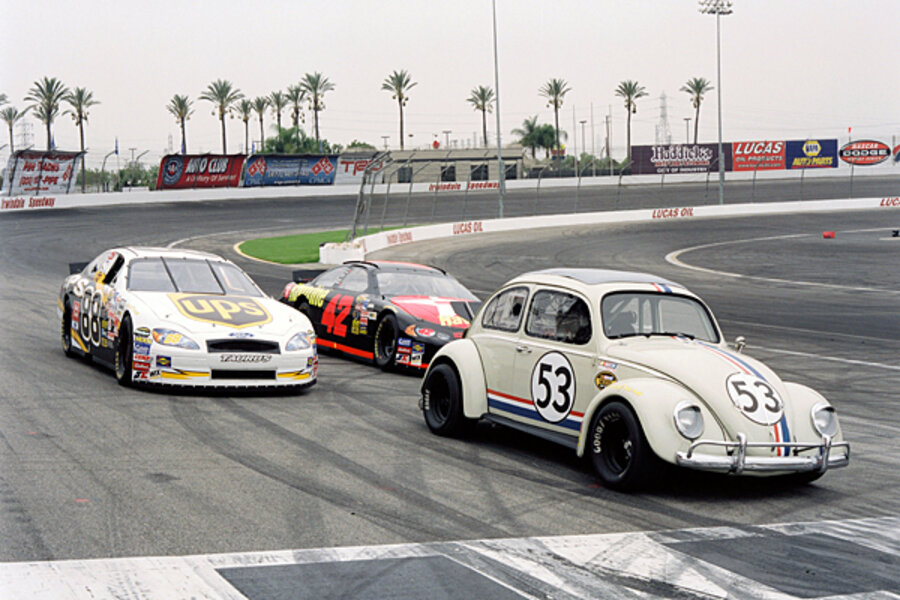Google's self-driving cars will let you spend less time driving, more time Googling
Loading...
Google has plunged into what might at first seem like a tech area unrelated to its bread-and-butter business as the king of Internet search and advertising: self-driving cars.
Yet relieving a driver of the burden of having to, well, drive, will permit him or her to (safely) do what we often do when we are off the road and that is right up Google's alley: search the Internet and use mobile applications.
Accordingly, Google envisions a time when drivers as well as passengers can fully make use of a "fourth screen" in their vehicles, after those on televisions, computers and nowcell phones.
"We live in a very mobile society; people move between their phones, PCs and TV freely, and they want that increasingly rich environment to travel with them," said Tony King-Smith, vice president of marketing for Imagination Technologies, a United Kingdom-based consumer electronics firm involved with in-car information and entertainment systems.
"In that context, a driverless car makes a lot of sense."
Moving the field forward
Google revealed in a blog post over the weekend that its under-the-radar initiative has already logged more than 140,000 miles (225,000 kilometers) of human-chaperoned, automated driving by seven cars throughout California and into Utah.
The vehicles "use video cameras, radar sensors and a laser range finder to 'see' other traffic, as well as detailed maps (which we collect using manually driven vehicles) to navigate the road ahead," wrote Sebastian Thrun, Google's lead on the project.
The blog stated that Google's motivations are to "prevent traffic accidents, free up people’s time and reduce carbon emissions."
With regards to the second item, Thrun pointed to Department of Transportation estimates that "people spend on average 52 minutes each working day commuting. Imagine being able to spend that time more productively."
Google's efforts to get people's hands off the steering wheel and feet off the pedals have impressed some in the research field.
"In my opinion, their work on this project is a major milestone in the history of mobile robotics research," said John Leonard, a professor of mechanical and ocean engineering at the Massachusetts Institute of Technology in Cambridge, Mass.
Leonard is not directly involved with the Google project, but the company has hired several of his colleagues (and former competitors), such as Thrun, who participated in the military's own driverless car contest, called the DARPA Grand Challenges and held in 2004, 2005 and 2007.
The first two rounds involved vehicles autonomously driving in deserts, while the third, called the Urban Challenge, simulated city driving conditions on a closed Air Force base in Calif.
"I applaud the Google team for their achievements, which have been obtained in a very short time," Leonard told TechNewsDaily.
"Their work has embodied a number of significant advances over what was achieved just three years ago at the DARPA Urban Challenge. These include driving at highway speeds and understanding traffic signals."
Google's team has not made technical details available as yet, but even so, "clearly this team has created a very compelling demonstration of technology," Leonard said.
A smarter car
By all accounts, a truly driverless vehicle that could safely navigate the roadways remains many years off.
The enabling of this liberated driver to enjoy the technological creature comforts as permitted by the interior of a vehicle are already becoming a reality, however.
Dashboards have evolved from a series of hardware and gauges to digital screens and intelligent multimedia displays combining the three historically separate realms of instrumentation, navigation and driver information.
Ford Motor Company, for example, is rolling out its "dashboard of the future" with the MyFord Touch interface available on several models next year and will come standard on 80 percent of Ford’s fleet by 2015, according to a spokesperson.
The system brings interfaces for consumer electronics, such as touch-sensitive buttons and screens, thumb-wheel controls and voice recognition right into vehicle.
Although these dashboards and controls are made for a vehicle driven by a human, they presage where the in-car interfaces are heading: parallel, that is, to the devices people use in everyday life.
In this way, Imagination Technologies' King-Smith likens the transition from human-operated "dumb" cars to robotically run smart cars to the rise of the smartphone.
"We're now looking at the phone becoming more environmentally aware, more aware of its 3-D orientation in space," he said, and for automated vehicles like Google's, the trend will be to "attach an increasing number of cameras and to have the processing horsepower to analyze the environment and ultimately do decision making."
Linked-up and cruising
A major part of keeping an automated car both in tune with satellite navigational aids, for example, and business or pleasure internet for occupants will be harmonizing, or at least accounting for all the various wireless signals used in these applications.
Imagination Technologies is continuing development of an all-in-one microchip that allows for the receiving of all sorts of wireless signals, from television to radio to Wi-Fi to Bluetooth. "As your car is traveling through a constantly changing communications ether," King-Smith said, "[this chip] allows you to make the car do what you want it to do, which is stay connected."
King-Smith thinks ultimately the major hurdles for having fully automated vehicles hit the road will be consumer acceptance and regulatory approval.
"The consumer acceptance of something like a driverless car is a tall order, but Google has the market presence and technological horsepower to help make that happen," King-Smith told TechNewsDaily. "The principle of a car becoming a lot more intelligent and connected is an unstoppable trend."
• Emerging Tech Could Make Tomorrow's Cars Safer
• Distracted Driving: The Dangers of Mobile Texting and Phone Calls
• Coolest Vehicles You'll Never Get to Ride
IN PICTURES: Tiny Cars





